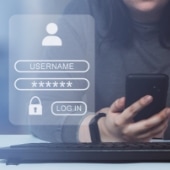 The digital era has brought about unprecedented convenience, but it has also opened doors for new and sophisticated forms of fraud. One such scam is Voice over Internet Protocol (VoIP) phishing, in which cybercriminals exploit VoIP technology to target individuals and organizations alike by pretending to be trustworthy entities and urging them to divulge sensitive information. But what makes VoIP phishing so rampant? Let’s examine the key factors that contribute to its proliferation so you can better develop strategies to counteract this threat.
The digital era has brought about unprecedented convenience, but it has also opened doors for new and sophisticated forms of fraud. One such scam is Voice over Internet Protocol (VoIP) phishing, in which cybercriminals exploit VoIP technology to target individuals and organizations alike by pretending to be trustworthy entities and urging them to divulge sensitive information. But what makes VoIP phishing so rampant? Let’s examine the key factors that contribute to its proliferation so you can better develop strategies to counteract this threat.
Why VoIP phishing is so rampant
Here are four reasons why VoIP phishing is cybercriminals’ preferred tactic:
Creating fake numbers is easy with VoIP technology
Unlike traditional phone systems, VoIP technology allows cybercriminals to generate virtual phone numbers easily. These numbers can appear to be from legitimate sources, making it challenging for recipients to discern the authenticity of the call. This deceptive tactic gives scammers a significant advantage, enabling them to impersonate banks, government agencies, or other trusted individuals to convince potential victims to share sensitive information.
VoIP is easy to set up but difficult to track
VoIP services are remarkably easy to set up, requiring only an internet connection and appropriate software or hardware. This simplicity allows scammers to swiftly deploy their schemes without the need for elaborate infrastructures.
Additionally, VoIP calls often traverse multiple networks and can be routed through various countries, making it challenging for law enforcement agencies to track down the culprits. This allows VoIP scammers to operate undetected and avoid legal consequences.
VoIP caller IDs can be tampered with
One of the alarming aspects of VoIP phishing is that attackers have the ability to manipulate caller ID information. Scammers can easily spoof or tamper with the caller ID so it displays a different number or name, further deceiving the recipients. This practice, known as caller ID spoofing, adds a layer of authenticity to VoIP scams, making it more likely for individuals to answer a phishing call.
VoIP scamming is cost-efficient
Cybercriminals can make numerous calls globally without incurring substantial expenses, as VoIP call rates cost significantly less than long-distance calls using traditional phones. This affordability allows scammers to conduct large-scale phishing campaigns, targeting a wide range of potential victims and maximizing their profits without straining their budget.
Protect your business against VoIP phishing
In the face of rising VoIP-based scams, it is imperative for your business to establish stringent policies governing information sharing and to implement strict security processes for all forms of communication. By setting clear guidelines on how sensitive information is shared, stored, and accessed, you can significantly reduce your business’s risk of falling victim to VoIP phishing attempts.
Employees should also be educated about the various forms of phishing attacks, including VoIP scams. Regular awareness programs and training sessions can empower employees to identify phishing attempts and respond appropriately, such as refraining from sharing sensitive information over the phone without proper verification.
You can further bolster your defenses by partnering with cybersecurity experts who specialize in scam prevention. These professionals can assess the specific vulnerabilities of your organization and devise tailored strategies to mitigate the risks associated with VoIP-based scams and other forms of cyberthreats.
If you need a hand in implementing cybersecurity solutions, turn to us. Our experts can help you set up protective measures so you can stay ahead of VoIP scammers and other malicious actors. Contact us today.




